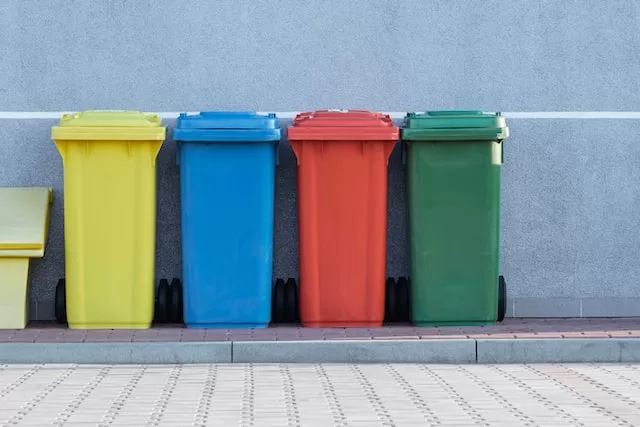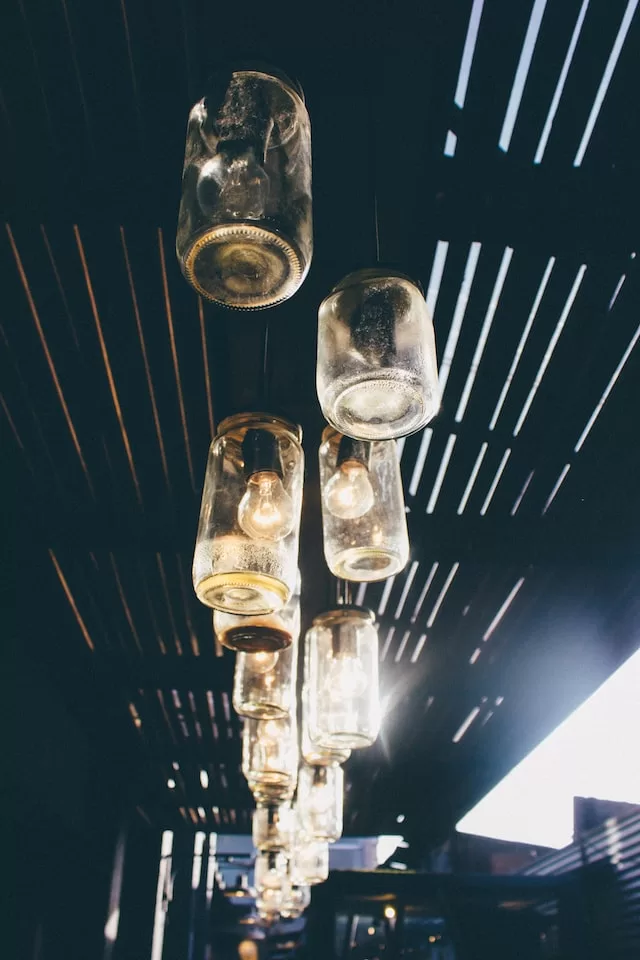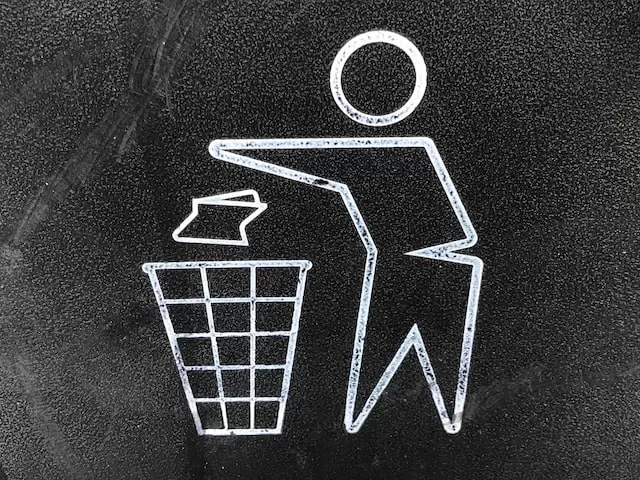Recycling involves breaking down an item and using the materials to create a new item, while upcycling involves repurposing an item into something new without destroying it. Upcycling is often seen as a more sustainable option because it doesn’t require the use of additional resources.
How do recycling and upcycling differ?
The main difference between recycling and upcycling is that recycling involves breaking down materials and turning them into new products, while upcycling uses waste materials and turns them into new, higher-quality products.
Recycling is a process where waste materials are collected and sorted before being turned into new products. The recycling process usually starts with sorting the waste material into different types, such as glass, plastic, metal, paper, etc. Once the waste material has been sorted, it is then cleaned and processed to remove any impurities. After the cleaning process, the waste material is then ready to be recycled into new products.
Upcycling is a process where waste materials are used to create new, higher-quality products. Upcycling takes waste materials and transforms them into new products that are of a better quality than the original material. For example, an old pair of jeans can be upcycled into a stylish handbag or a piece of furniture can be upcycled into a work of art.
How to recycle?
(Photo By Pawel Czerwinski on Unsplash)

To recycle, you must first collect the items that you would like to recycle. Once you have collected these items, you must then sort them into different categories. The most common categories are glass, plastic, paper, and metal. Once you have sorted your items, you must then clean them before they can be recycled.
After your items are sorted and cleaned, you must then take them to a recycling centre. At the recycling centre, the items will be separated further and put into different bins. The most common bins are for glass, plastic, paper, and metal. Once the items are in the appropriate bin, they will be taken to a facility where they will be recycled into new products.
How to upcycle?
(Photo By Javier Graterol on Unsplash)

Upcycling is all about taking something that would otherwise be considered trash and giving it new life as a usable or even beautiful item. This can be done in several ways, but often involves repurposing items or using them in a new way.
For example, an old coffee table might be upcycled into a new piece of furniture, or an empty wine bottle could be turned into a vase or candle holder. The possibilities are endless, and upcycling is a great way to get creative while also doing your part to reduce waste.
The benefits of recycling
When it comes to recycling, many benefits come along with it. For starters, recycling helps to conserve resources and energy. It takes less energy to recycle materials than it does to create new products from scratch. Additionally, recycling reduces pollution and greenhouse gas emissions.
Another big benefit of recycling is that it creates jobs. The recycling industry employs over 1 million people in the United States alone. And as more and more people become aware of the benefits of recycling, that number is only going to grow.
Finally, recycling is good for the economy. Recycling businesses generate billions of dollars in revenue each year, and that money gets circulated back into the economy. So not only does recycling help to save the planet, but it also helps to boost the economy.
The benefits of upcycling
When it comes to sustainability, upcycling is often seen as a more environmentally-friendly option than recycling. Upcycling entails taking waste materials and turning them into new products of better quality or higher environmental value. In contrast, recycling involves breaking down materials into their parts so they can be used to create new products.
There are several reasons why upcycling is better for the environment than recycling. First, upcycling requires less energy to create new products. Second, upcycling reduces pollution and emissions since it doesn’t require the use of heavy machinery and chemicals. Finally, upcycling helps to reduce our reliance on resources like oil and coal.
In addition to being better for the environment, upcycling can also have a positive impact on people’s lives. Upcycled products often have a unique look and feel that can’t be replicated with mass-produced items. What’s more, by shopping for upcycled goods, you’re supporting local businesses and artisans who are committed to sustainable practices.
Which is better: recycling or upcycling?
Recycling is the process of turning used materials into new products. This is usually done by breaking down the material and then using it to create something else. For example, recycled paper can be turned into new paper or recycled plastic can be turned into new plastic products.
The main advantage of recycling is that it reduces the amount of waste that goes into landfill sites. It also uses less energy than making products from scratch, which helps to save resources and reduce pollution. However, recycling can be expensive and time-consuming, and not all materials can be recycled.
Upcycling is the process of taking used materials and turning them into something better. This could mean repurposing an old piece of furniture into something new or using old clothes to make a quilt or other item of clothing. Upcycling often requires more creativity than recycling, but it can be a great way to give old items a new lease of life.
The main advantage of upcycling is that it doesn’t require any extra resources or energy – you’re simply using what you already have to create something new and unique. Upcycling can also be cheaper than buying new items, and it’s often more fun and satisfying than simply throwing things away.
What is an example of upcycling?
One example of upcycling is turning an old t-shirt into a new item of clothing, like a tank top or a headband. This gives the t-shirt a new lease on life and avoids it from going to waste in a landfill. Upcycling can be applied to lots of different materials and objects – there’s no limit to what you can do!
What is downcycling?
Downcycling is a type of recycling where materials are used to create new products of lower quality than the original. For example, using recycled glass to make new bottles would be downcycling because the new bottles would be weaker and less clear than the original glass.
What are the 5 benefits of upcycling?
1. Upcycling is a great way to reduce waste and environmental pollution.
2. It helps you save money by reusing materials that would otherwise be thrown away.
3. It’s a fun and creative way to give new life to old items.
4. Upcycled products are often more unique and interesting than mass-produced items.
5. You can feel good about knowing that your upcycled creations are helping to make the world a better place.
What are the 5 benefits of recycling?
1. Recycling reduces the amount of waste that goes into landfills and incinerators.
2. Recycling reduces the demand for virgin materials, which conserves natural resources.
3. Recycling requires less energy than producing new products from scratch, which saves energy and reduces greenhouse gas emissions.
4. Recycling creates jobs in the recycling and manufacturing industries.
5. Using recycled materials instead of virgin materials can help reduce pollution and conserve resources
What are the main upcycled products?
Several different upcycled products can be made from recycled materials. Some of the most popular upcycled products include:
-Clothing: Upcycled clothing is often made from recycled fabrics or garments. This type of clothing is usually more affordable than new clothing, and it helps to reduce waste and pollution.
-Furniture: Upcycled furniture is often made from recycled wood or other materials. This type of furniture is usually more affordable than new furniture, and it helps to reduce waste and pollution.
-Home décor: Upcycled home décor is often made from recycled materials. This type of décor is usually more affordable than new décor, and it helps to reduce waste and pollution.
What are the negatives of upcycling?
There are a few potential negatives to upcycling that should be considered before beginning any projects. First, upcycling can be time-consuming, especially if you are starting with raw materials. It can also be difficult to find instructions or tutorials online for some more complicated projects. Additionally, upcycling can sometimes be more expensive than simply buying new items, especially if you need to purchase tools or other materials. Finally, there is always the risk that your upcycled project will not turn out as planned or end up being less durable than the original item.
Featured Image By – Gary Chan on Unsplash









